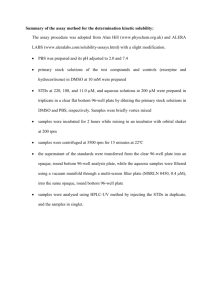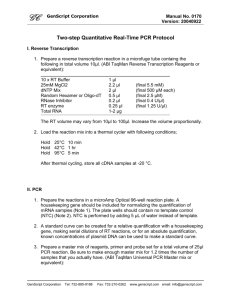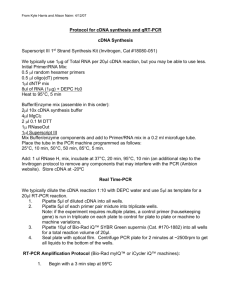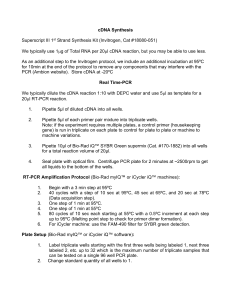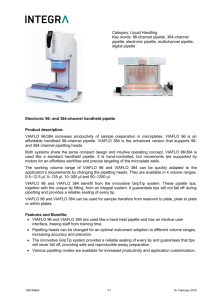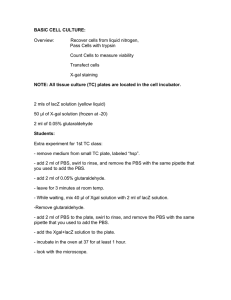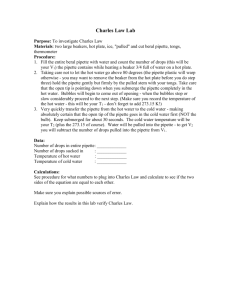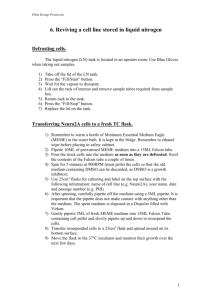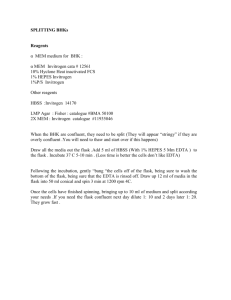QPCR_protocol
advertisement
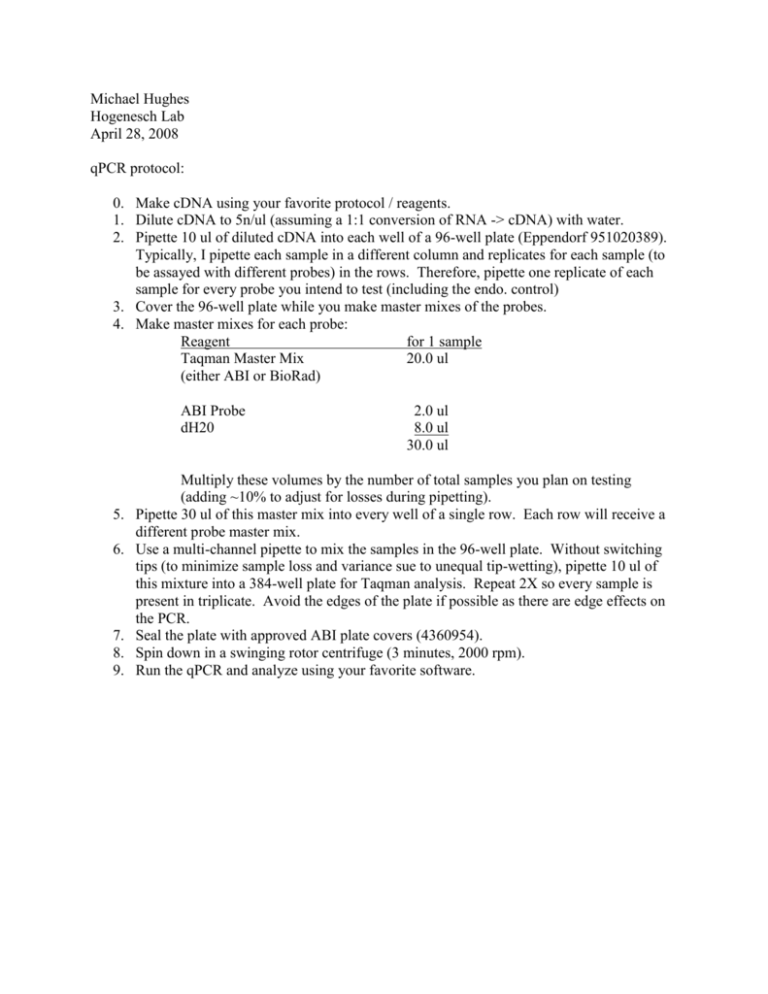
Michael Hughes Hogenesch Lab April 28, 2008 qPCR protocol: 0. Make cDNA using your favorite protocol / reagents. 1. Dilute cDNA to 5n/ul (assuming a 1:1 conversion of RNA -> cDNA) with water. 2. Pipette 10 ul of diluted cDNA into each well of a 96-well plate (Eppendorf 951020389). Typically, I pipette each sample in a different column and replicates for each sample (to be assayed with different probes) in the rows. Therefore, pipette one replicate of each sample for every probe you intend to test (including the endo. control) 3. Cover the 96-well plate while you make master mixes of the probes. 4. Make master mixes for each probe: Reagent for 1 sample Taqman Master Mix 20.0 ul (either ABI or BioRad) ABI Probe dH20 5. 6. 7. 8. 9. 2.0 ul 8.0 ul 30.0 ul Multiply these volumes by the number of total samples you plan on testing (adding ~10% to adjust for losses during pipetting). Pipette 30 ul of this master mix into every well of a single row. Each row will receive a different probe master mix. Use a multi-channel pipette to mix the samples in the 96-well plate. Without switching tips (to minimize sample loss and variance sue to unequal tip-wetting), pipette 10 ul of this mixture into a 384-well plate for Taqman analysis. Repeat 2X so every sample is present in triplicate. Avoid the edges of the plate if possible as there are edge effects on the PCR. Seal the plate with approved ABI plate covers (4360954). Spin down in a swinging rotor centrifuge (3 minutes, 2000 rpm). Run the qPCR and analyze using your favorite software.

